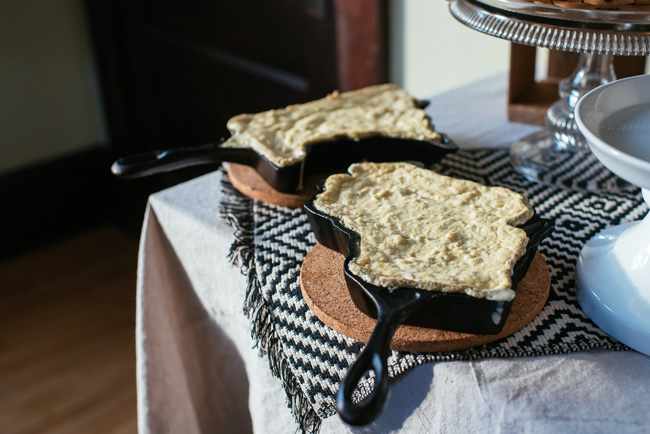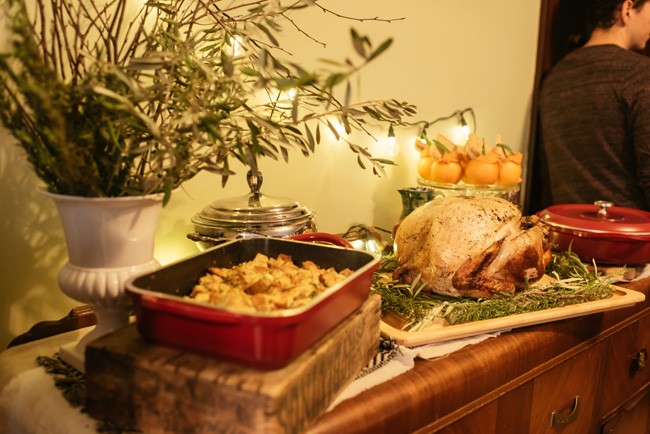
We at Heavy Table are not the kind of people who flee to a warmer climate each winter, enjoying four days of sunshine and pleasure only to come back ashen faced and crestfallen to a hibernal hell. If you’re the type to depart for Mexico, we salute you — it’s a fine choice — but we have an alternative or supplemental idea to suggest, which is that you grip winter firmly by the tail, hoist it above your head, and beat it against the rock of good food and hospitality until it is pliable and completely nonthreatening.
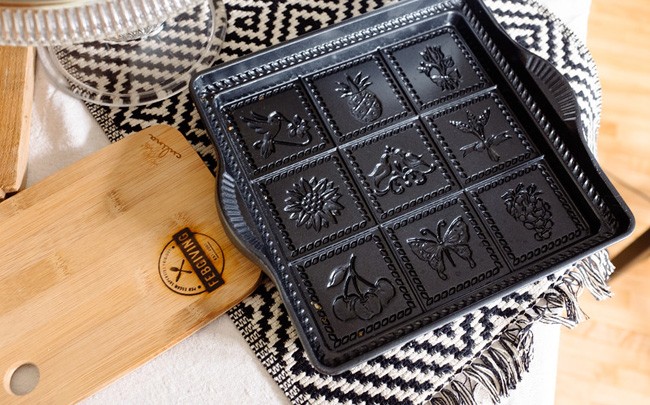
The main weapon in our arsenal: Febgiving, an annual feast held on or before Valentine’s Day. (The Dilley-Norton household does two a year because things have gotten out of hand, but we generally recommend starting with one and seeing how things go.) Febgiving got its start eight years ago when we copy / pasted our favorite holiday, Thanksgiving, from November into the deepest, darkest depths of winter. We loved the result so much that we set about telling the world of its wonders: the holiday legitimately changes the emotional contours of the calendar, turning February from a pit of despair into a month we look forward to with an eagerness matched only perhaps by our anticipation of gorging ourselves silly at the State Fair.
 This year, our Febgiving feast was underwritten by the folks at Nordic Ware. Here’s why we truly dig Nordic Ware: these guys have been doing “North” for decades before it was cool. They make good quality cookware that supports our recipes. And they’ve got a sense of whimsy that helps bump a meal up from “tasty” to “memorable.” In addition to financial support, Nordic Ware sent us a few pieces of cookware — including a shortbread pan, an open baker, a turkey pan, and a covered braiser — that we deployed in support of our Febgiving meal.
This year, our Febgiving feast was underwritten by the folks at Nordic Ware. Here’s why we truly dig Nordic Ware: these guys have been doing “North” for decades before it was cool. They make good quality cookware that supports our recipes. And they’ve got a sense of whimsy that helps bump a meal up from “tasty” to “memorable.” In addition to financial support, Nordic Ware sent us a few pieces of cookware — including a shortbread pan, an open baker, a turkey pan, and a covered braiser — that we deployed in support of our Febgiving meal.
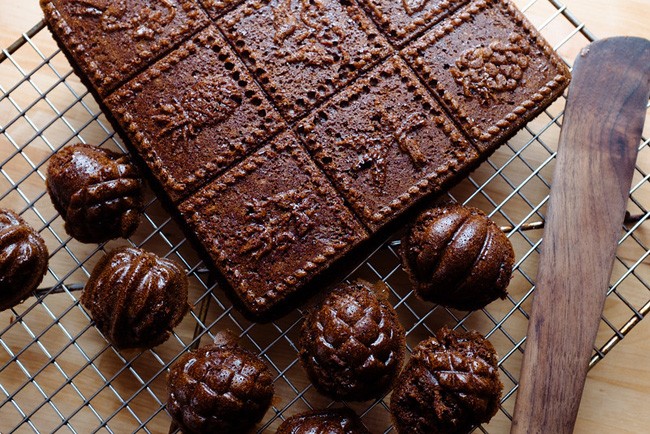
We’re taking Febgiving particularly seriously this year, and if you’d like to follow suit, check out this recipe for butternut squash kaddo (an Afghan-inspired appetizer) and listen to me sell the holiday to Jill Riley and Steve Seel over on the Current’s Morning Show.
Without further ado, we present some concrete ideas for how you can grasp Febgiving and truly make it your own.

#1 Organize a Spectacle
Perversely, it seems that as the love of dining-as-entertainment rises, our willingness to create home hosted dining spectacles has dropped. Once upon a time, people had multiple sets of silver, elaborate serving vessels, family recipe collections, and all manner of ridiculous and ambitious settings to make meals at home feel like royal feasts. Now, we offload that to restaurants, and the loss is ours: not only are serious dinner parties a great way to polish our culinary chops and bring pleasure to our friends and families, they’re a chance to explore and celebrate a real sense of wintertime coziness — sure, you can call it hygge — that is central to thriving in our northern climate.
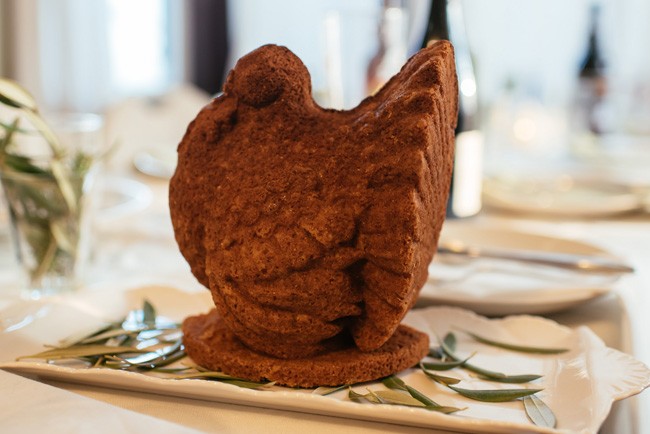
It doesn’t take a lot of effort to elevate a meal into something with a special feel to it. We made a sage cornbread to accompany our turkey-and-stuffing-driven feast, but we used a Nordic Ware turkey mold to do so, creating edible tabletop art.
And when we made our annual sweet-potato-stuffed oranges, we topped them with something special: orange rosemary shortbread turned out of a decorative pan. The shortbread was a perfect complement to the orangey sweet potatoes, and the pairing packed a visual punch.

If you’re not against silliness — and for us, it is the water in which we swim — you can cook up something particularly zany. We had a Parade of Fowl, a three-person march featuring two smoked Cornish game hens, a smoked spatchcocked chicken, and our roast turkey.
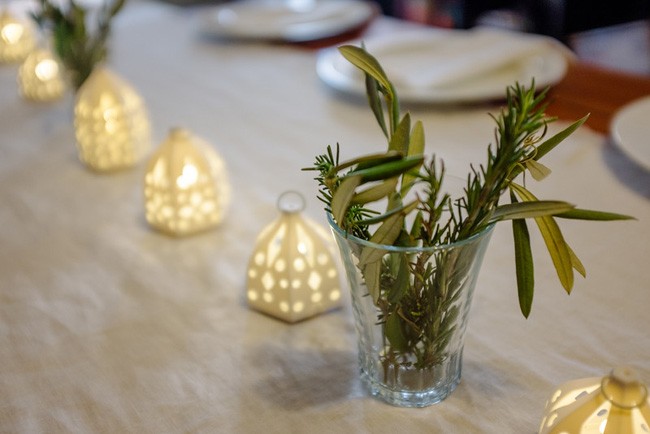
A little styling — think linens, lights, greens and flowers — goes a long way. We consulted with Diane Storevik Holetz from The Vintage Type, and she helped us assemble a look that was wintry but warm, with shades of green, white and black evoking snow, herbs, and the hearth.
Finally, when it comes to spectacle, craft a thing or two that everyone at the meal gets to enjoy together — an opening toast or a pre-dinner game of Hammerschlagen, for example.
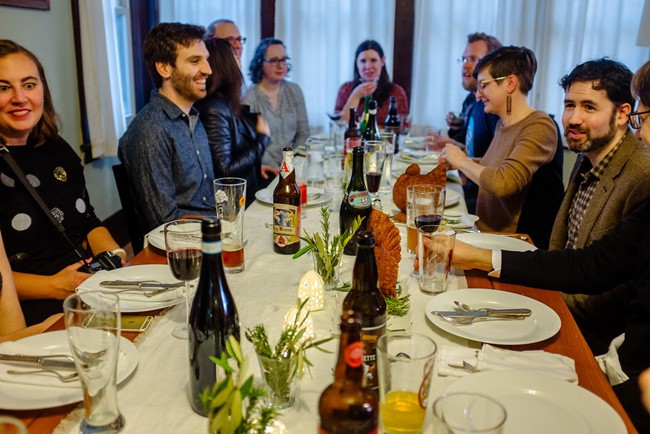
#2 Convince at Least One Out-of-Town Friend to Fly In
This is optional, but highly recommended. Here’s why it’s amazing: Your get to “cross the streams” and introduce your Minnesota friends to your friends from the rest of the country and world, making for fantastic cross-pollinations (and sometimes, fruitful side friendships that result in future visits and Facebook enrichment.) Your friends get to say, casually, “Oh, yeah, I’m flying to Minnesota in February to participate in an epic feast.” And your get to put together cultural visits and other meals while you hang out with your buddies, meaning that Febgiving isn’t just a one-night affair, it’s a two- or three-day experience.
For us, Febgiving has become a de facto reunion, with friends from the East and West coasts flying in and looking forward to seeing one another as much as (or perhaps more?) than seeing us. It’s bizarre and wonderful.
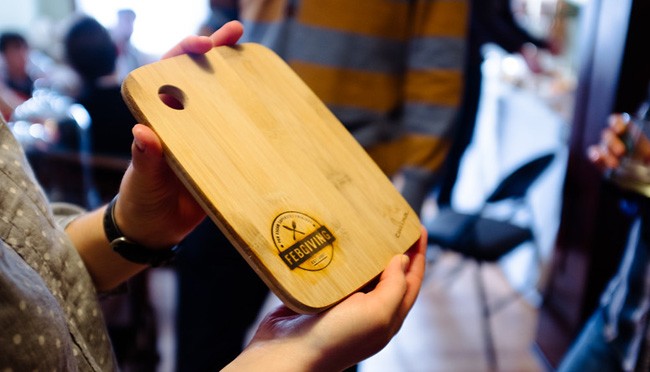
#3 Buy a Branding Iron
While not strictly necessary, a custom-made branding iron is useful for a number of reasons. First of all, it’s awesome. It’s a heavy, beautifully crafted block of engraved metal that heats up (via firepit, electric handle, or stovetop) and leaves an impression-by-fire image on any flat surface you’d like. Secondly, it’s a quick and easy way to give guests something memorable from your celebration, in our case, cutting boards showing off the Febgiving logo. In your case, it could be your household name (i.e. “Chez Dilley-Norton” or “Castle Smith”) or something related to a family business.
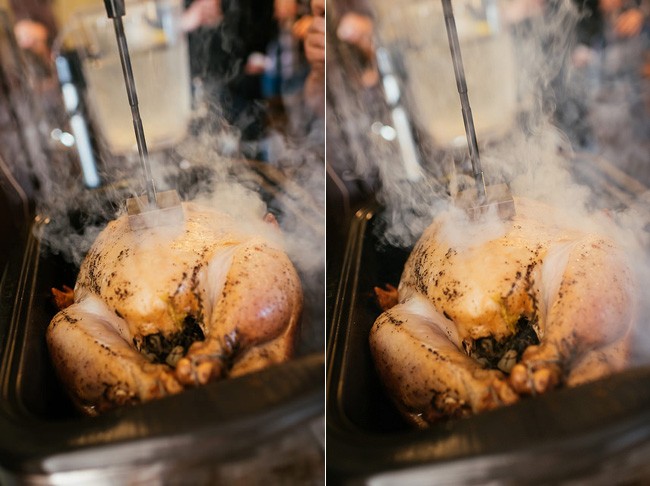
We also branded our turkey, and would deem it a mixed success. True, the resulting image wasn’t 100 percent legible, but the actual branding of the bird was the sort of guest-pleasing spectacle that money can’t buy. Unless you’re talking about the cost of the branding iron, in which case, yes, money can buy it. (We bought ours on brandingirons.com, and were pleased with the finished product.)
If you are interesting in living the branding iron lifestyle, we can point you toward the talented local designer (Rose Daniels) who crafted our brand and give you the following advice: heat your branding iron on your stovetop for a short period of time (try 10 minutes on high heat) and then test-brand a scrap of wood or an affordable bamboo cutting board. If the brand isn’t clear enough, try more heat and / or leave the brand on the board longer. We eventually wound up with a branding solution of 15 minutes at 8.5 / 10 heat and a 2-4 second branding window (we generally stopped when smoke poured enthusiastically from the wood.)

#4 Create a Signature Cocktail
When your 10th (or 15th, or 20th) friend arrives for the pre-dinner cocktail hour, it’s always nice to be able to greet them with something that’s easy to make but special. Our house cranberry vodka tonic is festive and dead simple once you’ve infused the vodka, yet another January task that makes the month seem less like an arctic wasteland and more like a pre-party.
But we also like to throw down the odd Ryenarcerous, a 2:1 mix of rye (we used 11 Wells) and Cynar with a big ol’ ice cube. We love bitters (and played with a good deal of Bittercube and Easy and Oskey while whipping up improvised drinks), but the Ryenarcerous is a full banquet of depth and flavor unto itself, the astringent, earthy sweetness of the Cynar complementing the mellow fullness of the rye.

#5 Plan and Plan and Plan
It seems counterintuitive to emphasize the pre-meal planning aspect of Febgiving, but it’s actually core to the holiday’s value. Most people’s Januarys, after the New Year’s Eve hangovers wear off, consist of grumpily choosing what exercise and diet plan to implement for the next 30 to 40 days before giving up in a fit of February ennui. Febgiving celebrators, by contrast, get to ponder menu choices, plan decor, rifle through servingware to put together the table setting, test recipes, and plot secondary and tertiary activities for visiting out-of-town friends (we had a feast-like-the-gods dinner at the Hirsch Room of Brasserie Zentral).

Studies have shown that much of the value of a vacation comes from anticipation — ditto Febgiving. Feast planning makes the New Year a time of mounting excitement and anticipatory pleasure, not just shoveling.
There is, of course, also some shoveling.
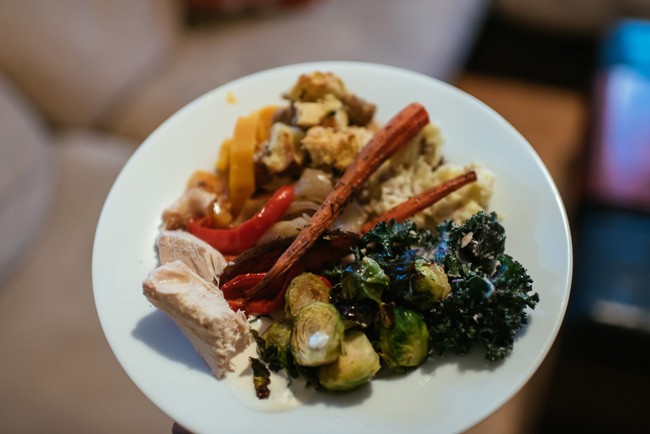
#6 Bring the Comfort
Pick some dishes that people can tuck into and feel warmed by. For us, it’s a sausage stuffing (and its vegetarian counterpart) that combines herbs, whole milk, eggs, sausage, and bread to make a warm, crispy-soft, substantial dish that could actually serve as a main were there not also a turkey proudly presented to the assembled group.
Roasted vegetables seasoned with nothing more than salt, pepper, olive oil, and a bit of herbs are another great to way to bring the comfort: they look fabulous, can be roasted the day before and warmed to serve, and they act as a marvelous counterpoint to the towering wall of carbs and meat that make up the heart of the meal.
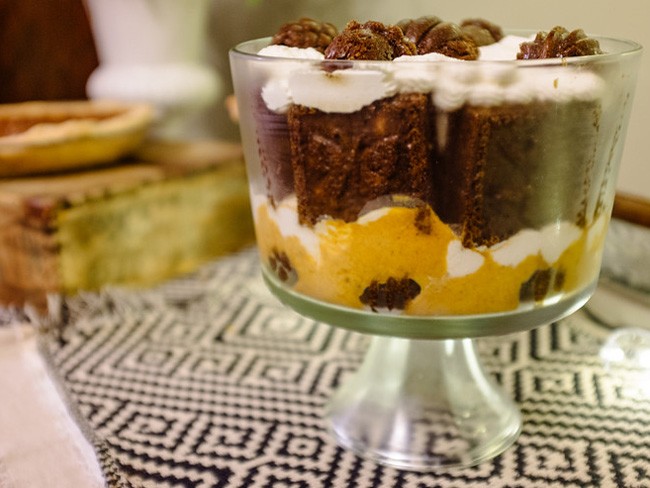
#7 For the Love of All That is Holy, Don’t Forget Dessert
We made a couple of dishes that we hoped would dazzle: maple syrup pecan pies (see below) and a pumpkin-gingerbread trifle decorated with chunks of gingerbread turned out from Nordic Ware nut-themed pans and decorated-shortbread molds. And to put a finer point on dessert:
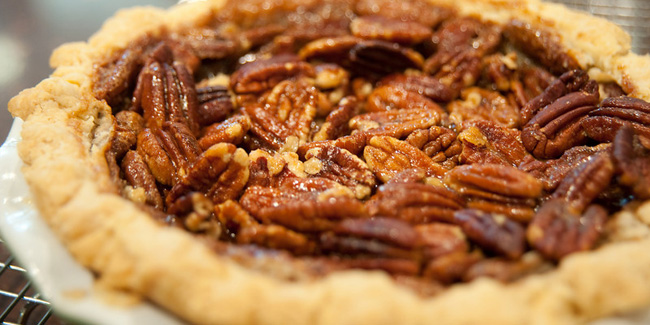
#8 Make a Tremendously Good Pecan Pie
It feels as though we’re giving away the keys to the kingdom on this one, but here goes: to make a really good pecan pie, you need only use maple syrup instead of corn syrup. Instead of emerging from the oven a gooey, headache-inducing mass of jelly, your pie comes out a subtle, wholesome, all-American confection with a ton of local cred if you manage to score some local maple syrup.
Thus concludes our sermon. If you wish to be a happier person and turn the emotional funeral of winter into the wedding of food and friends, embrace Febgiving, plan a big meal, and make it your own: you’ll find it’s a warm and cozy gift that keeps giving, year after year.

